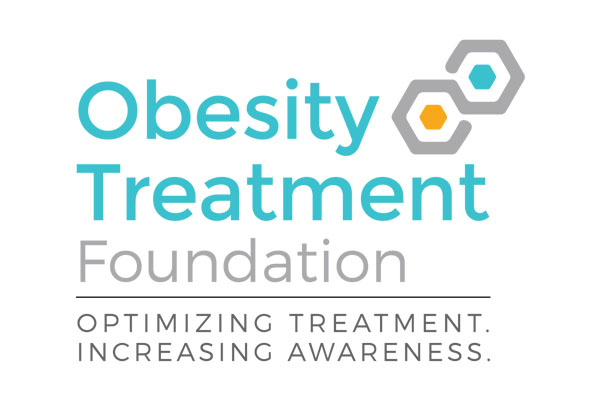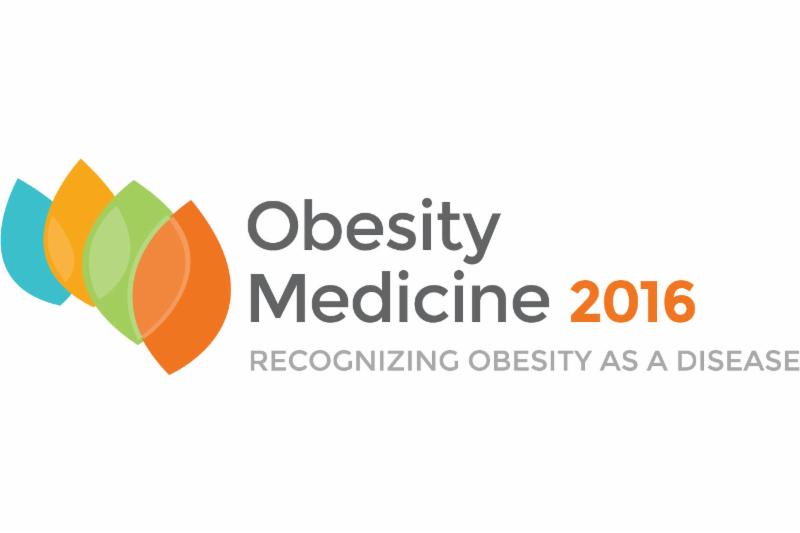LEADER trial shows reduction in cardiovascular risk with liraglutide injection
Last week, Novo Nordisk announced the results of its LEADER trial, which investigated the cardiovascular safety of the company's injectable medication for type 2 diabetes. Results showed that in addition to helping people with type 2 diabetes, Victoza® (liraglutide [rDNA origin] injection) also reduces the risk of major adverse cardiovascular events. Full detailed results of the LEADER trial will be presented at the annual meeting of the American Diabetes Association in June. Learn more
|
 |
 OCAN submits comments on CMS draft quality measure development plan
OMA is one of many partnering organizations working to advance obesity-related advocacy efforts on a national scale through the Obesity Care Advocacy Network (OCAN). Last week, OCAN commented on the Centers for Medicare & Medicaid Services (CMS) Draft Quality Measure Development Plan: Supporting the Transition to the Merit-based Incentive Payment System and Alternative Payment Methods. OCAN's comments included recommendations that CMS review OMA's and other organization's clinical practice guidelines; focus its conversations on obesity when identifying quality domains; and prioritize patient care, decision-making, collection of outcomes, access to services, referrals, counseling, and assessment as they related to quality measurement. Read the full letter to CMS containing OCAN's comments. |
Obesity Treatment Foundation
|

Last month to make a pledge for OTF's hair growth challenge and support the foundation
It's been almost a year since Drs. Krishna Doniparthi and Wickham Simonds pledged to grow their hair in support of the Obesity Treatment Foundation. In April, we'll measure both doctors' hair to determine how many inches of growth they achieved in one year. There's still time to make your pledge for every inch of hair growth. And, to make it even more interesting, both Dr. Doniparthi and Dr. Simonds promised to match the pledges they receive on their hair up to $5,000. Help us unlock $10,000 in total matching gifts by making your pledge--$25 per inch will help us get there! To make your pledge, contact Stacy Schmidt at stacy@obesitytreatmentfoundation.org. |
 |
|  |
Dr. Simonds before (left) and after 11 months of hair growth
|
Q&A with Dr. Wickham Simonds
We asked Dr. Wickham Simonds about growing his hair this past year and what, to him, is the most important about the Obesity Treatment Foundation (OTF). 1. How has the hair-growth process been? The process has been funny. I don't look the same, and a lot of patients and friends don't recognize me. I had to get my driver's license and passport photos updated. My female patient population almost always comments on my hair - they seem to love it. Most of my patients want me to keep it. 2. What do you wish other people knew about OTF and/or the field of obesity medicine? I wish other people could see the potential impact OTF could have. In my mind, obesity is the most prevalent and costly disease in the United States, and yet most health care practitioners still view it as a character flaw rather than treating it as a disease. The result is an underwhelming response to a complex disease. I see OTF as an avenue to change this, by educating health care providers about this disease. Once the medical community can agree that obesity is a disease, we can have a much better response to it. 3. What do you think will change about obesity treatment and research over the next five years? I think the role of medication in treating obesity is going to be more widely accepted. The demand for new drugs and devices to treat obesity will lead to more treatment options. I think you will see more clinical research to confirm that the obesity medicine approach is an effective way to treat this disease.
|
 |
Higher-protein diets improve indexes of sleep in energy-restricted adults with overweight and obesity: Results from two randomized controlled trials
Zhou, J., et al. AJCN, 2016.
Adequate sleep may be a major factor in the success of obesity treatment. A study was conducted to determine the effect of dietary protein intake on indices of sleep quality during an energy-restricted diet. The study found that consuming higher protein improved global sleep scores (GSS) independent of the protein source (beef and pork versus soy and legumes). In a subsequent study, higher protein intake (1.5g/kg/day) was found to improve GSS, while consuming normal protein amounts (0.8g/kg/day) did not affect GSS. These data suggest that consuming a higher-protein diet may be helpful in improving sleep during an energy-restricted diet. View article
|
Relationship among body fat percentage, body mass index, and all-cause mortality: A cohort study
Padwal, R., et al. Annals of Internal Medicine, 2016.
A study was conducted to examine the associations of BMI and body fat percentage, both separately and together, with mortality. Participants included 49,476 women and 4,944 men (64 years of age) who had dual-energy x-ray absorptiometry (DXA) scans, were entered into a clinical bone-mineral density registry, and were followed via linked administrative databases for 6.7 and 4.5 years for women and men, respectively. The analysis found that low BMI and high body fat percentage were independently associated with higher mortality in both women and men in the follow-up period. This study may help explain the counterintuitive association between BMI and mortality, as previous studies did not measure body fat directly. View article
|
|
|
|
Executive Director
Sponsorships and Exhibits Manager
Operations Manager
Education Coordinator
Communication Manager
Executive Director of the Obesity Treatment Foundation
|
|
101 University Blvd.,
Suite 330
Denver, CO 80206
|
|
|
Whey protein, amino acids, and vitamin D supplementation with physical activity increases fat-free mass and strength, functionality, and quality of life and decreases inflammation in sarcopenic elderly
Rondanelli, M., et al. AJCN, 2016.
Elderly individuals face the reality of experiencing age-related loss of skeletal muscle mass and function. A 12-week randomized, double-blind, placebo-controlled supplementation trial was conducted on 130 people (mean age: 80 years) with sarcopenia. Participants received either whey protein (22 g), essential amino acids (10.9 g, including 4 g leucine), and vitamin D (2.5 micrograms [100 IU]) or placebo. All participants engaged in regular, controlled physical activity. The study found that compared with placebo, supplementation increased fat-free mass (1.7 kg gain), handgrip strength, and quality of life measures, and lowered C-reactive protein. These findings suggest that whey protein, essential amino acids, and vitamin D supplementation in conjunction with exercise may be beneficial for elderly individuals for a number of health outcomes. View article
|
 |
Pediatric Obesity Research Updates
|
Childhood obesity risk in overweight mothers: Support for screening
James, K., Matsangas, P., and Connelly, C. Infant, Child, & Adolescent Nutrition, 2013.
Studies support that family dietary and nutritional behaviors predispose children to obesity. The Family Nutrition Physical Activity Screen (FNPA) is a 20-item questionnaire that can be administered in a short period of time to assess the risk of a child becoming overweight based on a family's lifestyle habits. It uses a holistic approach with a full exploration of family environmental influences that relate to obesity risk. For health professionals, it's a simple and easy-to-use screen to facilitate awareness and counseling on obesity prevention. Ninety-eight mothers of 172 children between 2 and 18 years of age completed questions on family meal patterns, family eating habits, food choices, beverage choices, restriction/reward, screen time behavior and monitoring, healthy environment, family activity involvement, child activity involvement, and family routines. Lower FNPA scores were associated with higher BMI, family income, race/ethnicity, education, and mother's BMI. Parents' and childrens' obesity was comparable to what is found in larger populations, whereas obesity in the age 2-to-5-year age group doubled. The results supported that maternal obesity is a significant predictor for the development of child obesity.
This article points out a lot of important risk factors for early childhood obesity. Maternal BMI is certainly one the greatest risk factors. The American Academy of Pediatrics (AAP) provides general guidance to address increasing consumption of fruits and vegetables, limiting screen time, participating in daily physical activity, and eliminating of sugar-sweetened beverages. However, this generalized advice is often of little use when caring for a mother with obesity and her infant. The AAP also strongly encourages exclusive breast-feeding and delaying complementary foods as long as possible for the prevention of obesity, but the great majority of mothers combine breast-feeding and formula with some foods by the age of six months. View article
|
Patterns of early dietary exposures have implications for maternal and child weight outcomes
Rose, C., Savage, J., and Birch, L. Obesity, 2016.
This article provides some insight as to how we can improve childhood obesity counseling. This study focused on 1,203 infants at birth and then at nine months. Subjects fell into five categories of dietary exposure: breast-fed fruit and vegetables, breast-fed with low variety, formula-fed fruit and vegetables, formula-fed low variety, mixed high-energy-dense foods (this category involved mixing breast milk and formula and a high probability of feeding energy-dense items like french fries and desserts). As could be predicted, the percentages of children measured as overweight at nine months increased across these categories, with the mixed high-energy-dense group having the highest percentage of infants with excess weight at greater than 20 percent. Surprisingly, the lowest percentage of infants with excess weight was in the breast-fed low-variety group. Post-pregnancy maternal weight loss also increased across the five categories. View article
|
 |

Obesity Medicine 2016
Early registration ends Friday, and after that rates will go up! Register by Friday, March 11, to lock in the early registration rate. Obesity Medicine 2016 is your leading resource for certification exam review and the premiere source of education about managing an obesity medicine clinic, nutrition, and the comprehensive approach to obesity treatment. Earn up to 30.5 CME/CE and attend the courses that most interest you!* While you're there, don't miss all that San Francisco has to offer. Take a trip to Alcatraz for a taste of history, walk along the waterfront or the Golden Gate Bridge, or visit one of the city's many cultural districts. |
Review Course for the ABOM Exam
13.25 CME/CE | April 6-7
Helps prepare those planning to take the American Board of Obesity Medicine (ABOM) certification exam.
| Practice Management Essentials
6.5 CME/CE | April 6
Explains the best business practices for running an obesity medicine clinic, from setting up a practice to boosting patient retention.
|
|
Nutrition Course
6.75 CME/CE | April 7
Outlines the latest evidence-based findings about nutrition and helps you select appropriate nutrition plans for your patients.
| Spring Obesity Summit
17.25 CME/CE | April 8-10
Addresses topics related to current and emerging research, evidence-based treatment approaches, technologies, and practical methods used by obesity medicine clinicians.
|
|
|
*The Review Course for the ABOM Exam runs concurrently with Practice Management Essentials on Wednesday and the Nutrition Course on Thursday. Registration for the Review Course includes two days of class time, and switching between courses is not allowed.
|
|
|
|
The Obesity Medicine Association and the Obesity Treatment Foundation thank our 2016 Corporate Advisory Council members for their continuous support.
|
© 2016 Obesity Medicine Association. All rights reserved. Materials may not be reproduced, redistributed or translated without written permission. Advertising disclaimer: Under a policy approved by the OMA executive committee and exhibitor/advertiser review committee, commercial companies may apply to advertise in OMA publications. Approval does not imply endorsement or official recognition of particular products or services.
|
|
|
|